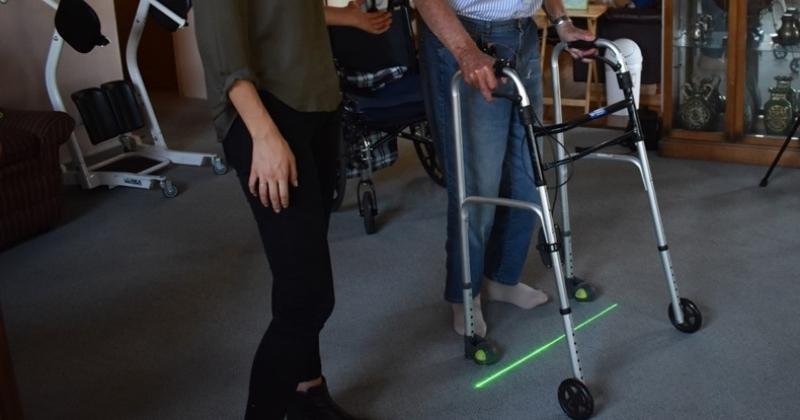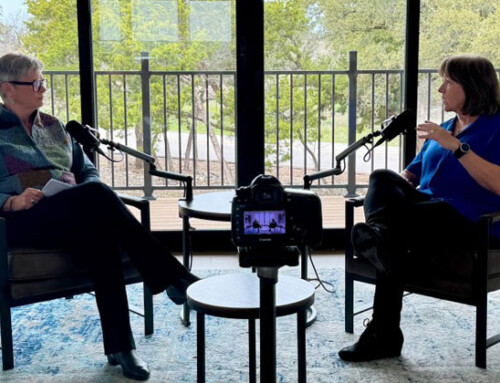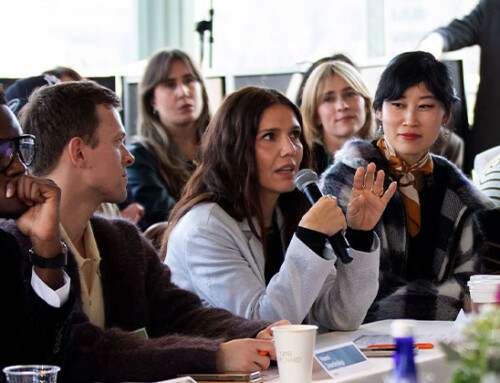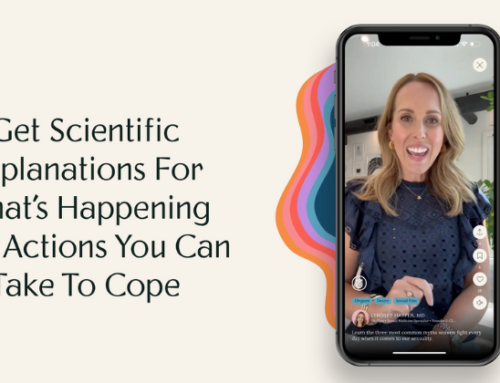With another $2.8m seed round padding its coffers, de Oro Devices CEO Sidney Collin wants to create more awareness for NexStride, a portable device to help people with Parkinson’s disease overcome “freezing gait” and expand into other disease states such as multiple sclerosis, stroke and cerebral palsy.
The seed financing, first announced in June, was led by True Wealth Ventures with participation from AARP, StartUp Health, Capital Factory, Wai Mohala Ventures, Kachuwa Impact Fund, Barton Investments, HealthTech Capital, Wealthing VC Club, Rockies VC, and Mentors Fund. To date, de Oro Devices has raised about $4.3m in total funding.
About 50% of people living with Parkinson’s disease experience “freezing” during normal movement, which is caused by a loss of control in brain regions responsible for movement.
According to the company, even small external cues associated with moving forward can help people overcome freezing and NexStride is the only attachable device available on the US market today that uses both auditory and visual cues to help people overcome freezing gait. The device can be attached to any cane, walker, or wheelchair to help prevent falls.
“When your brain is sending that signal to initiate movement that signal just doesn’t get to the motor neurons that are activating your muscles,” Collin said. “We can take these external visual cues [a green laser light projected onto the floor] and auditory cues [a metronome that provides a steady rhythm] that allow you to activate the goal-oriented neural pathways in the brain, bypassing the damaged neural circuit that’s causing freezing of gait and allows you to be able to restore mobility.” The company began a soft launch of NexStride in the US in April 2020, but since then has made significant strides.
Marketed through multiple channels – direct-to-consumer, physical therapy clinics and hospitals – NexStride is available in seven countries through distributors and used in 100 physical therapy clinics nationwide. However, at a retail price of $500, NexStride is not affordable for everyone, so the company is working on securing payor coverage for the device.
Veterans can obtain NexStride for free from the US Department of Veterans Affair (VA), and the Parkinson’s Wellness Fund also covers part or all cost for the device through grants. Otherwise, most users pay cash for the device. De Oro Devices’ main competitor is Skokie, Il-based In-Step Mobility, which markets the U-Step Walker, which comes with an optional laser and sound cueing module for Parkinson’s freezing, and the In-Step LaserCane with laser light. Collin is quick to point out that NexStride is different because it combines auditory and visual cues which research has shown is more effective than using either visual or auditory cues by themselves.
Raising Awareness
Collin founded De Oro Devices while studying biomedical engineering at Cal Poly in San Luis Obispo. She invented NexStride after meeting a local veteran and Parkinson’s disease patient, Jack Brill, who approached the school about a device to help him overcome freezing gait.
Collin said she saw it as a great opportunity to use her engineering skills while helping someone in the community and eventually turned from working on a school project to becoming an entrepreneur. While she’s seen success, creating awareness for the condition has been a major hurdle for wider adoption.
“A lot of people, even if they experience freezing gait don’t know the term freezing of gait. Trying to market and spread awareness and make sure that people that need this product are aware that it exists is probably the biggest thing that we struggled with getting the device out to market,” she says. To overcome this challenge, Collin and her team spent a lot of time talking to Parkinson’s disease support groups, physical therapy clinics and providing information to the Parkinson’s community.
De Oro Devices also struck partnerships with the Parkinson’s and Movement Disorder Alliance, the Parkinson’s Foundation of Western Pennsylvania, Parkinson’s Wellness Recovery, and the Davis Phinney Foundation to create awareness for the device.
Next Steps
The company is now planning to expand into other disease states, such as multiple sclerosis, cerebral palsy and stroke rehabilitation. De Oro Devices recently published a case study with Bellevue Hospital in New York City evaluating NexStride in rehabilitation with an 80-year-old stroke patient for gait improvement. The patient reported that using NexStride was “beneficial” in improving gait deviations.
The researchers concluded that more studies are needed to determine the direct benefit of NexStride compared to conventional therapy and in assessing long-term benefits of NexStride for persons with a history of stroke and ataxia. (Also see “MedRhythms On First-To-Market Track With Prescription Music Therapy For Chronic Stroke” – Medtech Insight, 11 Aug, 2022.)
So far, NexStride is purely hardware-driven, which is a bit “behind the curve” in this data-driven world. But Collin said that integrating software is part of the roadmap and without wanting to give details will be focused on collecting mobility data for physical therapists and neurologists. She expects to start beta-testing in mid-2023.
View the original article here: https://medtech.pharmaintelligence.informa.com/MT145713/De-Oro-Devices-NextStride-To-Help-Freezing-Gait-Is-Expand-Into-Other-Diseases-Add-Software






